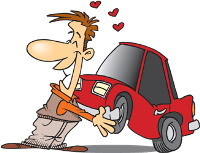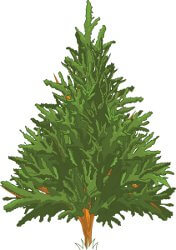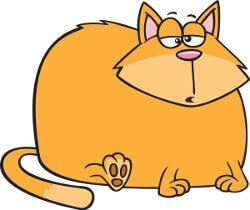Quotation Mark
Rules and Examples
 A
quotation mark looks like two apostrophes
together and
is always written in pairs (Like this: “ ” or like this: " ").
A
quotation mark looks like two apostrophes
together and
is always written in pairs (Like this: “ ” or like this: " ").Click Here for Step-by-Step Rules, Stories and Exercises to Practice All English Tenses
The quotation mark is used in written language to quote exact words from spoken or written language.
But that is not all! Here is a list of the main uses:
1. To quote exact words from spoken or written language.
Examples:- Anthony J. D'Angelo said, "Develop a passion for learning.
If you do,
you will never cease to grow."
- She said, "Come home."
- "This is a new car," Jeff explained.

2. To show titles. The titles can be of short stories, poems,
articles, chapters, etc.
Examples: - My favorite poem by Emily Dickinson is "There Is Another
Sky."
- Did you read the article "Building Vocabulary"?
- The first chapter in the book is "The Tall Tree."

3. To show that a word or phrase is used in an unusual way.
Examples:- Her "farewell present" was a slammed door.
(= It was not really a farewell present.)
- What does this "expert" claim?
(= The writer does not really think this person is an expert.)
- She shared her "wisdom" with me.
(= The writer thinks she told things that were not so wise.)
- He could "see" my thoughts.
(= The writer knows the word see is not used this way exactly, but is trying to illustrate the idea.)
- You should "pay" her with your love.
(= The writer knows the word pay is not used this way exactly, but is trying to illustrate the idea.)
- He was "delighted" to read the news.
(= He was not so delighted...)
4. To show that a word is
used as a word, or that a letter is used as a letter.
Examples: - Look up the word "calm" in the dictionary.
- "Face" comes from Latin.
- To get the past form, add "ed" after "walk."
- She did not understand the word "overweight."

On the keyboard
You can make quotation marks on most computers by holding the SHIFT key and pressing the apostrophe/quotation mark key to the left of ENTER.
Rules for the Quotation Mark
1.
Quotation marks are always used in pairs. If you open a
quotation,
you have to close it.Incorrect: "I am studying to become a teacher, she said.
Correct: "I am studying to become a teacher," she said.
Incorrect: She performed the poem, "There is another sky by Emily Dickinson.
Correct: She performed the poem, "Where the Sidewalk Ends," by Emily Dickinson.
2. The period and comma can go inside or outside the quotation mark,
depending on the following factors.
In American
English, periods
and commas
always go inside
the quotation marks, even if it does not seem to make
sense.Example in American English:
- My students enjoyed reading "Oranges."
- "We should go home," said Bob.
In British English, Canadian English and islands under the influence of British education, punctuation with quotation marks makes more logical sense. Periods and commas that are not part of the quoted sentence go outside the quotation marks.
Example in British English:
- My students enjoyed reading "Oranges".
(The period is not part of the title, so it goes outside.)
- "We should go home", said Bob.
(The comma is not part of the quote so it goes outside.)
- She said, "I will definitely do it."
(Here the period is part of the quote since it goes inside.)
3. The placement of question marks and exclamation points with quotation marks follows logic.
- If the punctuation mark belongs
to the title or quote, then it goes inside.
- If the punctuation mark does
not belong to the title or quote, then it goes outside.
Examples:
- He said, "do you want to stay?"
- Did you watch "Spider-Man"?
- Joan yelled, "Stop talking!" She was pretty upset.
- Melissa told me, "You are the best"! I was so happy to hear that!
4. Semicolons and colons always go outside the quotation marks.
- Incorrect: I
love "Where the Sidewalk Ends;" however, my favorite poem is by
Robert Frost.
Correct: I love "Where the Sidewalk Ends"; however, my favorite poem is by Robert Frost.
- Incorrect: The
following fruit are called "tropical:" bananas, coconuts and pineapples.
Correct: The following fruit are called "tropical": bananas, coconuts and pineapples.
Summary Table
| Punctuation mark | Position | Examples |
| Period | American: inside British: follows logic | American: Read the chapter "Fish." British: Read the chapter "Fish". |
| Comma | American: inside British: follows logic | American: "You are right," she said. British: "You are right", she said. |
| Exclamation point | American and British: follows logic | American and British: Dan said, "Let's go!" Janet forgot the book "Wild Sea"! |
| Question mark | American and British: follows logic | American and British: Did you read "Wild Sea"? He asked, "Did we meet?" |
| Colon | American and British: outside | American and British: Here is what we mean by "late": five minutes or more after 7 AM. |
| Semicolon | American and British: outside | American and British: They wanted to watch "Spider-Man"; Tom did not. |
5. Punctuation around quoted speech depends on how it fits into the rest of the text.
- If a quoted word or phrase fits into the sentence without a break or pause, then we usually do not use commas.
Example:
I read "The Lost Keys" any
time I need a laugh!
- You almost always need a comma following a form of to say. Place a comma directly after, then a space, then the quotation mark.
Some forms of to say are: says,
said, replied, yelled, asked and exclaimed.
Examples:
She said, "Keep your hands to yourself."
He replied, "I left the keys in the car."
She said, "Keep your hands to yourself."
He replied, "I left the keys in the car."
- If the quote comes after an independent clause (a sentence that can be by itself), use a colon ( : ) before the quoted sentence.
Example:
My dad's favorite saying was from my Grandmother: "If you do not have anything nice to say, do not say anything at all."
My dad's favorite saying was from my Grandmother: "If you do not have anything nice to say, do not say anything at all."
- When a form of to say comes in the middle of the quoted sentence, use commas on both sides. The first comma will be inside of the quotations. The second comma will be directly after the word said (or another form of to say).
Examples:
"Your brother," my mom said, "wants you to be at his party."
"My wedding is in two weeks," she exclaimed, "and I am so excited!"
"Your brother," my mom said, "wants you to be at his party."
"My wedding is in two weeks," she exclaimed, "and I am so excited!"
6. When using quotation marks in writing to show different speakers,
make a new paragraph for each change of speaker.
Example:"Please clean your room," mom said.
I replied, "I do not want to clean my room."
"Then you will not go to the park today," she told me.
"I guess I will clean my room!" I exclaimed.
7. Capitalize the first letter of a quote if the quote is a complete sentence.
Incorrect: When Bill came home he asked, "who made this mess?"Correct: When Bill came home he asked, "Who made this mess?"
Quotation marks inside quotation marks
In American English, use single quotation marks on the inside and double quotation marks on the outside.For example: She said, "I read the chapter 'The Tall Tree' yesterday."
British English varies on this, but in many cases the double quotation marks are inside and the single quotation marks are outside.
For example: She said, 'I read the chapter "The Tall Tree" yesterday.'
This article describes double quotation marks ( " ” or " " ), but there are also single quotation marks ( ‘ ’ or ' ' ).
Visit also: Quotation Marks Worksheets
These were the uses of the Quotation Mark. Now that you know them, it is time to practice! Read and do exercises.
Get Updates, Special Offers, and English Resources
Download your FREE GIFT (the first two chapters of
English Short Stories Book and Workbook)
as soon as you join!

By submitting your email, you consent to receiving updates and newsletters from us and to the sharing of your personal data with third parties for the purposes of sending you communications. We will not spam you. You can unsubscribe at any time. For more information, please see our privacy policy.









